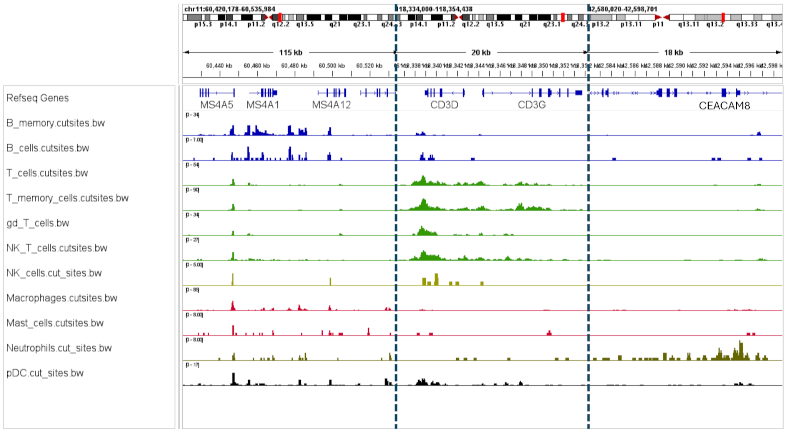scCUT&Tag Technology
What It Is

Single-Cell CUT&Tag is an advanced single-cell profiling method that focuses exclusively on profiling epigenetic marks—such as histone PTMs, transcription factor (TF) binding, and chromatin remodelers—at single-cell resolution. By targeting DNA-bound proteins, single-cell CUT&Tag unveils the regulatory changes that drive cell-state decisions, disease progression, or responses to external stimuli, without requiring RNA data. This streamlined approach delivers deep insights into how cells differ epigenetically, making it particularly powerful in contexts where RNA is less critical or degraded.
Who It’s For

- Epigenetics Research: Experiments primarily designed to target histone modifications, TF binding, or chromatin structure, rather than transcript-level data.
- Archival/FFPE samples: Ideal for tissues with compromised RNA integrity, where typical multiome approaches may fail.
- Perturbation Assays (KI/KO/compound): Projects focusing on how chemical or genetic perturbations reshape chromatin without needing to measure gene expression.
- Follow-up from Bulk: Confirm cell-to-cell variability discovered in bulk CUT&Tag, mapping epigenetic changes onto distinct cell populations.
How It Works

- Single-Cell Platform Integration: scCUT&Tag integrates seamlessly with single-cell barcoding systems (e.g., 10x Chromium®, Fluent PiP-seq®, or Singleron GEXScope®), tagging DNA directly within individual cells or nuclei.
- Sample Prep & Assay: Works with fresh/frozen tissues, PBMCs, cell lines, organoids, and even partially degraded samples. The process tags DNA-protein complexes via a specialized Tn5 transposase conjugated to an antibody, ensuring epigenetic signals remain intact.
- Data Generation: Each cell’s epigenetic marks are barcoded and sequenced. Because no barcodes are used for RNA, coverage per epigenetic target is typically higher than in multiomic workflows.
- Analysis & Interpretation: FastQ files can be aligned using established CUT&Tag pipelines, with cluster-based or reference-based methods for cell-type annotation. Further steps might include peak calling, motif analysis, or differential occupancy across conditions.
Why Single-Cell CUT&Tag?

- Focused Epigenetic Coverage: By dedicating all sequencing depth to DNA targets, the method uncovers subtle chromatin changes that might be missed in multiomic assays.
- Cell-Specific Insights without RNA Perfect for scenarios where RNA is compromised, optional, or already characterized by other means.
- RNA Surrogates for Degraded Samples: Perfect for cases where RNA is compromised. Targets such as RNA-Pol2 and H3K36me3 provide strong surrogates for RNA - even in degraded samples.
- Simpler Workflow: Fewer steps than a transcriptome + epigenome approach, potentially reducing costs and complexity.
- Broad Compatibility: Adapts to multiple single-cell barcoding platforms and works on a wide range of samples, including archived tissue.
Product & Service Options

- scCUT&Tag Kits: Ready-to-use reagent kits for single-cell epigenetic profiling, designed to integrate with leading single-cell platforms.
- Full-Service Offerings: Our expert scientists can run the entire scCUT&Tag workflow on your samples, from preparation to data analysis—ideal for labs seeking epigenetic insights without in-house setup.
Get Started
Ready to delve into high-resolution epigenetic profiling—without relying on RNA? Contact us to learn more about setting up scCUT&Tag in your lab or explore our full-service options for maximum convenience. Uncover the regulatory landscapes that shape cell identity, treatment response, and disease progression with single-cell CUT&Tag today!